CSE 2221 Midterm 2 Ultimate Study Guide
1/124
Earn XP
Name | Mastery | Learn | Test | Matching | Spaced |
|---|
No study sessions yet.
125 Terms
NaturalNumber
a component group that lets you work with whole numbers (numbers like 0, 1, 2, 3, etc.). It acts like a tool or a way to do things with these numbers (interface)
interface
Description of the boundary between a system and everything else
standard interface
contains standard methods that are part of most (nearly all) OSU CSE component families:
clear()
newInstance()
transferFrom()
Single point of control over change
having one central place to make and manage changes in software, making it easier to update and control the software effectively (Think standard interface).
kernel (primary) methods
Minimal set of methods that are primitive (baseline) for NN: isZero(), multiplyBy10(), divideBy10
Primary methods can be used to make secondary methods
Secondary methods
usually more robust or versatile compared to the kernel methods
they are added to the component family to make it easier to use in everyday client code
mathematical model
a structured representation of a real-world situation or system using mathematical equations, formulas, or symbols
emphasizes the importance of specifying any limitations or conditions (constraints) that affect the possible values within the model
constraints
limitations or restrictions that impose rules or conditions on certain aspects of a system or model, specifying what is allowed or not allowed.
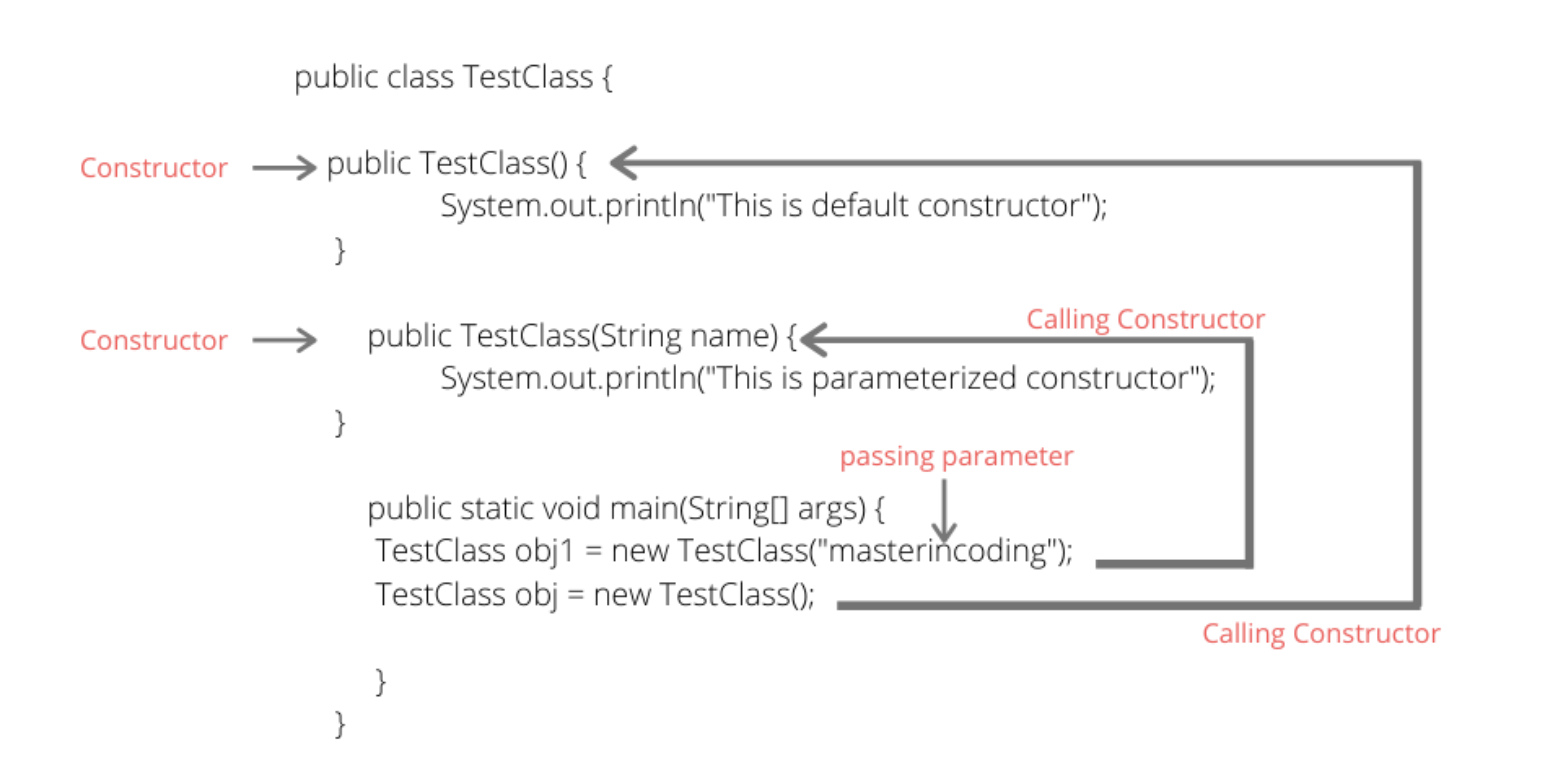
constructors for NN
Special methods used for the creation of an object.
There are four types of constructors for each implementation class:
No-argument constructor:
ensures: this = 0
Copy constructor:
ensures: this = n
Constructor from int:
requires: i >= 0
ensures: this = i
Constructor from string:
requires: there exists n: NATURAL
(s = TO_STRING(n))
ensures: s = TO_STRING(this)
constructors
Special methods used for the creation of an object
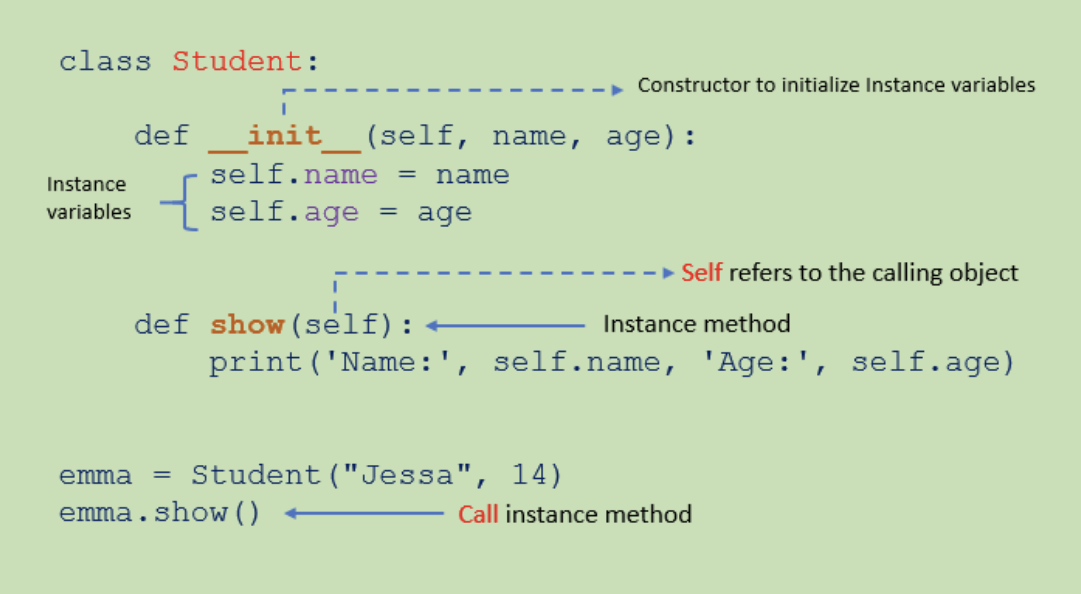
instance method
methods defined under a class and we can call such functions only after creating an object of that class
All the methods for NaturalNumber are
instance methods
n.methodName(arguments) (What is n, arguments, this?)
where n is an initialized variable of type NaturalNumber
n is going to be the receiver on this, and then everything else it'll it can refer to itself as this inside that method
for all instance methods, the corresponding distinguished formal parameter implicitly has the name this.
distinguished formal parameter
refers to a special parameter in an instance method called this
receiver
the thing that receives the call for one of its methods. It can be a package or an object
parameter mode
Javadoc contract tags
refers to the way in which a argument is modified in a function or method
the parameters of updates, replaces, restores, and clears
mutable
subject to change in updates, replace, and clear-mode parameter ()
In a ensures clause, a # in front of a variable whose value might be changed is pronounced "old";
#this denotes the old, or incoming, value of this
primitive type
built-in, fundamental data types
they represent simple values and are not objects
examples include boolean, char, int , & double
They have a fixed size and are typically stored directly in memory
reference types (or class types)
Encompass all other types in Java that are not primitive
They are used to create objects and represent more complex data structures
Examples include String, custom classes like NaturalNumber, and other user-defined types (SimpleReader, SImpleWriter, etc.)
They are like labels that show where objects are kept in the computer's memory, usually in a place called the "heap"
There is no limit on the number of other _________ types that can be developed
user-defined
primitive variable
Variable that represents a single value
reference value
stores the memory address of an object
reference
location in memory which points to the object
object
contains the value of the class (what is referred to by the reference)
memory address
A specific location in memory where instructions or data are stored
object value
a class instance that does not have an identity
String s = “go“ vs s → “go“
The → sign means that s is a reference to the object go
primitive variables
Can store data values
anonymous primitive variable
Variables without names (think literal ints, strings, etc)
uninitialized primitive variables
a variable that is declared but is not set to a definite known value before it is used.
anonymous reference variable
A literal, which has an object value but no name
uninitialized reference variable
A reference variable which has been created but hasn't been assigned a value
garbage collector
“reclaim” or “recycle” the memory where an unreferenced temporary object is stored
aliases
two or more references that refer to the same object
immutable types
types for which no method might change the value of the receiver, or any other argument of that type
mutable types
types for which at least one method might change the value of the receiver, or some other argument of that type
==
compares reference values
arrays are...
reference types
The name of the array (e.g., a in the example) is a reference to the entire collection of element variables a[0], a[1], …, and a.length
arrays using .equals()
does not actually compare arrays “element-wise“ but rather is equivalent to == and compares reference values
package
a namespace that organizes a set of related classes and interfaces; ex: java.util
contract details
• Contracts in the APIs for OSU CSE components include these important features:
Parameter names in requires and ensures clauses always stand for the object values, never the reference values, of the corresponding arguments to a method call
Reference-type arguments are always non-null
arguments
values that are passed into a method call
parameter modes
There are 4 parameter modes, each of which indicates a possible way that a method might change the value of the corresponding argument. Parameter modes help in 3 ways:
concisely summarize which arguments might have their values modified by a call
make requirements/ensures clauses shorter
allow us to perform sanity checks of contracts against simple errors
restores-mode
Restores the parameter back to its original incoming value
default parameter mode
a way to set default values for function parameters a value is no passed in (ie. it is undefined)
clears-mode
Sets the parameter to an initial value of its type as though there was a no-argument constructor (for NN this is 0)
replaces-mode
Has a value that might be changed from its incoming value, but the method's behavior does not depend on its incoming value
updates-mode
has a value that might be changed from its incoming value, and the method's behavior does depend on its incoming value
null reference
a reference that does not refer to any object
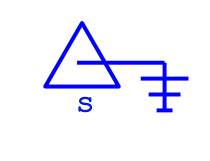
simple assignment
assigns the value or variable on the right to the variable on the left; variable = expression (→ in tracing table)
parameter passing
The process of assigning an argument value to a parameter variable.
Aliasing from parameter passing
Because a formal parameter of a reference type is initialized by copying the corresponding argument’s reference value (which is tantamount to assignment of the argument to the formal parameter), parameter passing is another source of aliasing
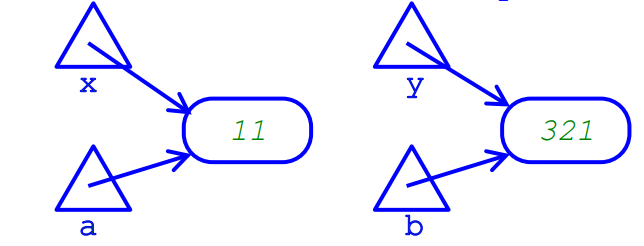
repeated arguments
sending the same reference as two different arguments in a method; same if passing a reference to itself through a method, i.e. n.add(n)
it would be impossible for any implementation of foo to produce the outcome supposedly ensured according to its contract
DO NOT DO REPEATED ARGUMENT. It is the fault of the client.
contract
an agreement that the class will expose certain methods, certain properties, and certain behaviors
a specification of its intended behavior
floor of s
a notation which means the greatest integer less than or equal to s; for non-negative s, it is also known as the integer part of s. (Example: ⌊4.47⌋ = 4)
interval halving (aka bisection or binary search)
each iteration eliminates half of a previous interval
mathematical strings
A string can be thought of as a series of zero of more entries of any other mathematical type, say, T (T is called an entry type)
Similar to an array
ex: <1, 2, 3, 2>, <'G', 'o'>, <>
Remember mathematical strings don’t have to be of type String
entry types
Can be elements, but they don't have to be; an element name, an amount, or a date For example, string of T where T is the entry type
Math notation for strings
The following notations are used when we write mathematics (e.g., in contract specifications) involving strings.
Notice two important features of strings:
There may be duplicate entries (in fact, there may be arbitrarily many of a given entry value)
The order of the entries is important
empty_string
The string "", which contains no characters and has a length of zero.
A string with no entries at all, is denoted by < > or by empty_string
Denote the string “go“…
<‘g‘, ‘o‘>
Mathematical string concatenation
linking into chains, uses the * symbol
Examples:
< 1, 2 > * < 3, 2 > = < 1, 2, 3, 2 >
< 'G', 'o' > * < > = < 'G', 'o' >
< > * < 5, 2, 13 > = <5, 2, 13 >
< > * < > = < >
Substring, Prefix, Suffix of mathematical strings
•We say s is substring of t if the entries of s appear consecutively in t
• We say s is prefix of t if the entries of s appear consecutively at the beginning of t
• We say s is suffix of t if the entries of s appear consecutively at the end of t
Use “is not“ for negation
length
The _____ of a string s, i.e., the number of entries in s, is denoted by |s|
Examples:
|< 1, 2, 3, 2 >| = 4
|< 'G', 'o' >| = 2
|< >| = 0
Notation for substrings of mathematical strings
The sub-string of s starting at position i (inclusive) and ending at position j (exclusive) is denoted by s[i, j)
Examples with s = "GoBucks":
s[0, |s|) = "GoBucks"
s[2, |s|-1) = "Buck"
s[1, 1) = ""
s[2, 3) * s[5, 7) = "Bks"
Notation for reverse of mathematical strings
The reverse of a string s, i.e., the string with the same entries as s but in the opposite order, is denoted by rev(s)
Examples:
rev(< 1, 2, 3, 2 >) = < 2, 3, 2, 1 >
rev(< 'G', 'o' >) = < 'o', 'G' >
rev(< >) = < >
Notation and meaning for permutations of mathematical strings
an arragement or listing in which an order or placement is important; denoted by perms (s1, s2)
Examples:
perms(< 1, 2, 3 >, < 3, 1, 2 >)
not perms(< 2, 2, 1 >, < 2, 1 >)
perms(< >, < >)
Notation for occurrence count of mathematical strings
Counts the number occurrences of specific text, such as terms, phrases, numbers, or expressions in a larger text; denoted by count (s, x)
Examples:
count(< 2, 2, 2, 1 >, 2) = 3
count(< 2, 2, 2, 1 >, 4) = 0
count(< 'G', 'o' >, 'G') = 1
count(< >, 13) = 0
recursion
When a function calls itself
implement
indicates a relationship between a class and an interface; it is making a commitment to provide concrete implementations for all the methods defined in that interface
If C implements I then class C contains code for the behavior specified in interface I
extends
signifies an inheritance relationship.
may hold between:
– Two interfaces or two classes
inherits
a fundamental concept in object-oriented programming where one class or interface takes on the attributes and behaviors (methods) of another
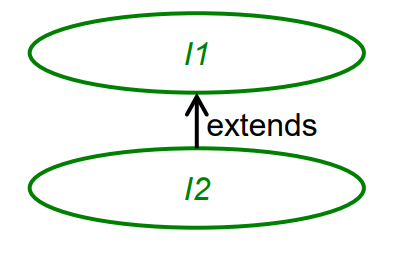
What terms an be used to describe the relationship between interfaces of ssI1 and I2 (6)
I2 is a subinterface of I1
I2 is a derived interface of I1
I2 is a child interface of I1
I1 is a superinterface of I2 s
I1 is a base interface of I2
I1 is a parent interface of I2
class extension
serves two purposes:
To add method bodies that are not already in the class being extended (similar to the use of extension for interfaces)
To override methods that are already
implemented in the class being extended, by providing new method bodies for them
override methods
refers to the practice of providing a new method body in a derived (or child) class for a method that is already implemented in the base (or parent) class
overload
refers to the ability of a class to have multiple methods with the same name, but with different parameters
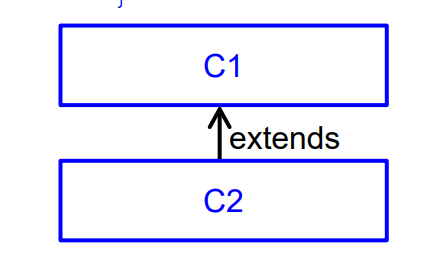
relationship between C1 and C2 (6 answers)
C2 is a subclass of C1
C2 is a derived class of C1
C2 is a child class of C1
C1 is a superclass of C2
C1 is a base class of C2
C1 is a parent class of C2
When writing the code for the body of either a method whose contract is from an interface being implemented, or that overrides a method in a class being extended, you preface the method body with an _________.
@Override annotation
Interface as declared type
When a variable is declared using the name of an interface as its type,
e.g.: NaturalNumber k = new NaturalNumber2(); then its declared type (or static type) is said to be an interface type
NaturalNumber is the interface, NaturalNumber2 is the class
class as declared type
When a variable is declared using the name of a class as its type,
e.g.: NaturalNumber2 k = new NaturalNumber2(); then its declared type (or static type) is said to be a class type
Object Type
When a variable is instantiated (an object for it to reference is constructed), e.g.: NaturalNumber k = new NaturalNumber2(); then its object type (or dynamic type) is the class type from which the constructor comes.
In this example the object type of k is NaturalNumber2.
instantiated
a call the constructor of a class that creates an instance or object of the type of that class
object type (or dynamic type)
a variable or an expression is the type of its value during runtime, when the program is being executed. It may change as the program is executed
polymorphism
having many forms
Example 1:
NaturalNumber k =
new NaturalNumber2();
NaturalNumber n =
new NaturalNumber2Override();
...
k.power(2);
n.power(2);
...
Example 2:
NaturalNumber k =
new NaturalNumber2();
NaturalNumber n =
new NaturalNumber2Override();
NaturalNumber j = k;
...
j.power(2);
…
common features with static and instance methods:
May have formal parameters, of any types
May return any type, or nothing (void)
May be public or private
May compute the same things
Arguments are passed to all calls using
the same parameter-passing mechanism
static methods
Are declared with the keyword static
- Suppose power is a static method declared in the class NNStaticOps
- Its declaration might look like this:
public static void power(NaturalNumber n, int p)
{...}
Are called without a receiver
- A call to power from within the class
NNExtraOps might look like this:
power(m, k);
- A call to power from outside the class
NNExtraOps might look like this; i.e., before
a dot, the method name is qualified with the
name of the class where it is declared:
NNExtraOps.power(m, k);
instance methods
Are declared without the keyword static
- Suppose power is an instance method
declared in the class NNExtraOps
- Its declaration might look like this:
public void power(int p)
{...}
Are called with a receiver
- Suppose m is a variable of dynamic/object
type NNExtraOps (or, it turns out, any type
that extends NNExtraOps)
- Then a call might look like this; i.e., before a dot is the name of the receiver of the call:
m.power(k);
confidence building approach
an argument that the code is correct (i.e., correctly implements its contract)
size metric
allows you to argue that a smaller problem is being solved by each recursive call in your code
A formal version of this argument follows the proof technique known as…
mathematical induction
proof by contradiction
assumes the statement to be proven is false, and work to show its falsity until the result of that assumption is a contradiction
Structure of Trees
Two views of a tree:
- A tree is made up of:
A root node
A string of zero or more child nodes of the root, each of which is the root of its own tree
A string of zero or more subtrees of the root, each of which is another tree
expression tree
a representation of a formula you might type into a Java program or into a calculator
order of evaluation
a collection of rules that reflect conventions about which procedures to perform first in order to evaluate a given mathematical expression
operator
signs, e.g., +, -, *, /
operand
numbers, e.g., 1, 2, 3, 4, & 5
expression tree
a representation of expressions arranged in a tree-like data structure
unit testing
to test individual units or components of software (one class, one method at a time)
the unit being tested is known as the UUT, or unit under test
integration testing
testing what happens when multiple components are put together into a larger system